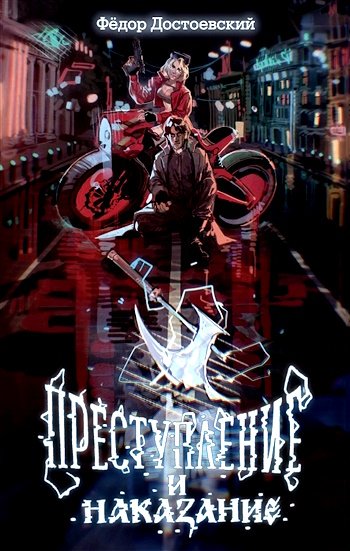Not since the original Mac had a clarity of product vision so propelled a company into the future. “If anybody was ever wondering why Apple is on the earth, I would hold up this as a good example,” Jobs told Newsweek’s Steve Levy at the time. Wozniak, who had long been skeptical of integrated systems, began to revise his philosophy. “Wow, it makes sense that Apple
Steve Jobs by Walter Isaacson 515
was the one to come up with it,” Wozniak enthused after the iPod came out. “After all, Apple’s whole history is making both the hardware and the software, with the result that the two work better together.”
The day that Levy got his press preview of the iPod, he happened to be meeting Bill Gates at a dinner, and he showed it to him. “Have you seen this yet?” Levy asked. Levy noted, “Gates went into a zone that recalls those science fiction films where a space alien, confronted with a novel object, creates some sort of force tunnel between him and the object, allowing him to suck directly into his brain all possible information about it.” Gates played with the scroll wheel and pushed every button combination, while his eyes stared fixedly at the screen. “It looks like a great product,” he finally said. Then he paused and looked puzzled. “It’s only for Macintosh?” he asked.
Steve Jobs by Walter Isaacson 516
CHAPTER THIRTY-ONE
Steve Jobs by Walter Isaacson 517
THE iTUNES STORE
I’m the Pied Piper
Warner Music
At the beginning of 2002 Apple faced a challenge.
The seamless connection between your iPod, iTunes software, and computer made it easy to manage the music you already owned. But to get new music, you had to venture out of this cozy environment and go buy a CD or download the songs online. The latter endeavor usually meant foraying into the murky domains of file-sharing and piracy services. So Jobs wanted to offer iPod users a way to download songs that was simple, safe, and legal.
The music industry also faced a challenge. It was being plagued by a bestiary of piracy services—
Napster, Grokster, Gnutella, Kazaa—that enabled people to get songs for free. Partly as a result, legal sales of CDs were down 9% in 2002.
The executives at the music companies were desperately scrambling, with the elegance of second-graders playing soccer, to agree on a common standard for copy-protecting digital music. Paul Vidich of Warner Music and his corporate colleague Bill Raduchel of AOL Time Warner were working with Sony in that effort, and they hoped to get Apple to be part of their consortium. So a group of them flew to Cupertino in January 2002 to see Jobs.
It was not an easy meeting. Vidich had a cold and was losing his voice, so his deputy, Kevin Gage, began the presentation. Jobs, sitting at the head of the conference table, fidgeted and looked annoyed. After four slides, he waved his hand and broke in. “You have your heads up your asses,” he pointed out. Everyone
Steve Jobs by Walter Isaacson 518
turned to Vidich, who struggled to get his voice working.
“You’re right,” he said after a long pause. “We don’t know what to do. You need to help us figure it out.” Jobs later recalled being slightly taken aback, and he agreed that Apple would work with the Warner-Sony effort.
If the music companies had been able to agree on a standardized encoding method for protecting music files, then multiple online stores could have proliferated.
That would have made it hard for Jobs to create an iTunes Store that allowed Apple to control how online sales were handled. Sony, however, handed Jobs that opportunity when it decided, after the January 2002
Cupertino meeting, to pull out of the talks because it favored its own proprietary format, from which it would get royalties.
“You know Steve, he has his own agenda,” Sony’s CEO Nobuyuki Idei explained to Red Herring editor Tony Perkins. “Although he is a genius, he doesn’t share everything with you. This is a difficult person to work with if you are a big company. . . . It is a nightmare.” Howard Stringer, then head of Sony North America, added about Jobs: “Trying to get together would frankly be a waste of time.”
Instead Sony joined with Universal to create a subscription service called Pressplay. Meanwhile, AOL
Time Warner, Bertelsmann, and EMI teamed up with RealNetworks to create MusicNet. Neither would license its songs to the rival service, so each offered only about half the music available. Both were subscription services that allowed customers to stream songs but not keep them, so you lost access to them if your subscription lapsed. They had complicated restrictions and clunky interfaces. Indeed they would earn the dubious distinction of becoming number nine on PC World’s list of “the 25 worst tech products of all time.” The magazine declared, “The services’
Steve Jobs by Walter Isaacson 519
stunningly brain-dead features showed that the record companies still didn’t get it.”
At this point Jobs could have decided simply to indulge piracy. Free music meant more valuable iPods.
Yet because he really liked music, and the artists who made it, he was opposed to what he saw as the theft of creative products. As he later told me: From the earliest days at Apple, I realized that we thrived when we created intellectual property. If people copied or stole our software, we’d be out of business. If it weren’t protected, there’d be no incentive for us to make new software or product designs. If protection of intellectual property begins to disappear, creative companies will disappear or never get started. But there’s a simpler reason: It’s wrong to steal. It hurts other people. And it hurts your own character.
He knew, however, that the best way to stop piracy
—in fact the only way—was to offer an alternative that was more attractive than the brain-dead services that music companies were concocting. “We believe that 80% of the people stealing stuff don’t want to be, there’s just no legal alternative,” he told Andy Langer of Esquire. “So we said, ‘Let’s create a legal alternative to this.’ Everybody wins. Music companies win. The artists win. Apple wins. And the user wins, because he gets a better service and doesn’t have to be a thief.”
So Jobs set out to create an “iTunes Store” and to persuade the five top record companies to allow digital versions of their songs to be sold there. “I’ve never spent so much of my time trying to convince people to do the right thing for themselves,” he recalled. Because the companies were worried about the pricing model and unbundling of albums, Jobs pitched that his new service would be only on the Macintosh, a mere 5% of the market. They could try the idea with little risk. “We used our small market share to our advantage by
Steve Jobs by Walter Isaacson 520
arguing that if the store turned out to be destructive it wouldn’t destroy the entire universe,” he recalled.
Jobs’s proposal was to sell digital songs for 99
cents—a simple and impulsive purchase. The record companies would get 70 cents of that. Jobs insisted that this would be more appealing than the monthly subscription model preferred by the music companies.
He believed that people had an emotional connection to the songs they loved. They wanted to own “Sympathy for the Devil” and “Shelter from the Storm,” not just rent them. As he told Jeff Goodell of Rolling Stone at the time, “I think you could make available the Second Coming in a subscription model and it might not be successful.”
Jobs also insisted that the iTunes Store would sell individual songs, not just entire albums. That ended up being the biggest cause of conflict with the record companies, which made money by putting out albums that had two or three great songs and a dozen or so fillers; to get the song they wanted, consumers had to buy the whole album. Some musicians objected on artistic grounds to Jobs’s plan to disaggregate albums.
“There’s a flow to a good album,” said Trent Reznor of Nine Inch Nails. “The songs support each other. That’s the way I like to make music.” But the objections were moot. “Piracy and online downloads had already deconstructed the album,” recalled Jobs. “You couldn’t compete with piracy unless you sold the songs individually.”
At the heart of the problem was a chasm between the people who loved technology and those who loved artistry. Jobs loved both, as he had demonstrated at Pixar and Apple, and he was thus positioned to bridge the gap. He later explained:

























